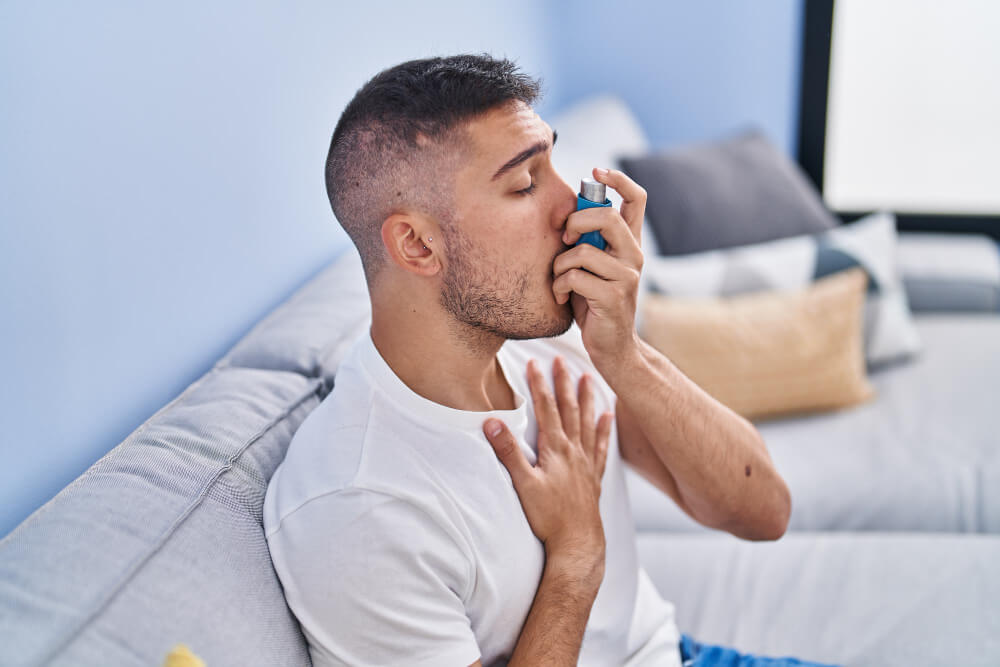Not Just Feeling Winded – The Reality of Shortness of Breath
Shortness of breath, medically known as dyspnea, is a common yet complex symptom experienced by people of all ages and backgrounds. It’s the unsettling feeling of not getting enough air, like your lungs are working overtime but barely keeping up. It can range from mild discomfort during exercise to a terrifying struggle for every breath, significantly impacting your daily life.
But why does this happen? The answer lies in the intricate dance between your lungs, heart, and blood, a team responsible for delivering oxygen to your body and removing carbon dioxide. When this delicate balance is disrupted, shortness of breath emerges as a signal of distress.
Unmasking the Culprits – Exploring the Causes of Shortness of Breath
The multitude of reasons behind shortness of breath can be broadly categorized into four main groups:
- Lung-related Causes:
- Asthma: Chronic inflammation of the airways leading to coughing, wheezing, and difficulty breathing.
- Chronic Obstructive Pulmonary Disease (COPD): A group of lung conditions like emphysema and chronic bronchitis that cause airflow obstruction.
- Pneumonia: Infection of the lung tissue by bacteria, viruses, or fungi.
- Pleurisy: Inflammation of the membrane lining the lungs and chest wall, causing sharp pain and breathing difficulty.
- Pulmonary embolism: A blood clot that travels to the lungs and blocks an artery, causing sudden shortness of breath and chest pain.
- Heart-related Causes:
- Heart failure: When the heart is unable to pump blood effectively, leading to fluid buildup in the lungs and breathlessness.
- Coronary artery disease: Narrowed arteries restricting blood flow to the heart muscle, which can manifest as shortness of breath during exertion.
- Arrhythmias: Irregular heartbeats that disrupt the normal pumping rhythm and can cause breathlessness, dizziness, and fatigue.
- Other Medical Conditions:
- Anemia: Low red blood cell count, reducing the oxygen-carrying capacity of blood and leading to fatigue and breathlessness.
- Anxiety and panic attacks: Can trigger hyperventilation, leading to rapid shallow breathing and the sensation of not getting enough air.
- Obesity: Excess weight puts pressure on the diaphragm and lungs, making it harder to breathe, especially during exercise.
- Altitude sickness: Low oxygen levels at high altitudes can cause rapid breathing, headaches, and fatigue.
- Environmental Factors:
- Air pollution: Exposure to high levels of irritants and pollutants can aggravate existing respiratory conditions and cause shortness of breath.
- Allergies: Allergens like pollen, dust mites, and mold can trigger allergic reactions in the respiratory system, leading to wheezing, coughing, and breathlessness.
From Diagnosis to Relief – Unwinding the Treatment Maze
Pinpointing the cause of your shortness of breath is crucial for receiving the right treatment. Your doctor will likely start with a detailed medical history, physical examination, and potentially additional tests like chest X-rays, lung function tests, and blood tests. Once the underlying cause is identified, treatment options can be tailored to address it:
- For lung-related issues: Inhalers, medications to reduce inflammation, oxygen therapy, and in some cases, surgery.
- For heart-related problems: Medications to manage heart failure, control blood pressure, or correct arrhythmias.
- For other medical conditions: Treating the underlying condition like anemia, managing anxiety, or weight loss strategies.
- For environmental factors: Avoiding triggers like allergens and pollutants, using air purifiers, and minimizing exposure to smoke and fumes.
Beyond Medications – Breathing Techniques for Breathlessness Battle:
While medical intervention is key, self-management strategies can play a significant role in managing shortness of breath:
- Pursed-lip breathing: Inhale slowly through your nose, purse your lips like whistling, and exhale slowly. This technique slows down your breathing rate and promotes relaxation.
- Diaphragmatic breathing: Breathe deeply into your abdomen rather than your chest, allowing your diaphragm to do the work. This improves oxygen intake and reduces air trapping.
- Positioning: Elevate your head and upper body with pillows while sleeping to ease breathing. Sitting upright with good posture can also improve air flow.
- Exercise and fitness: Regular physical activity, tailored to your abilities, can improve lung function and endurance over time.


